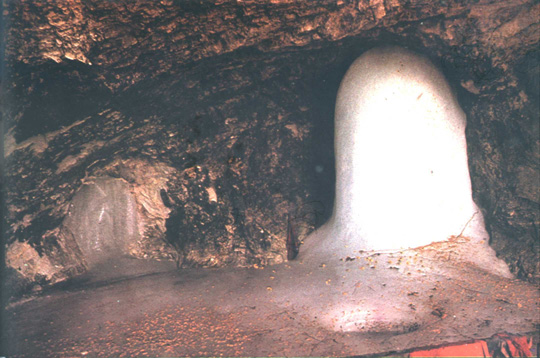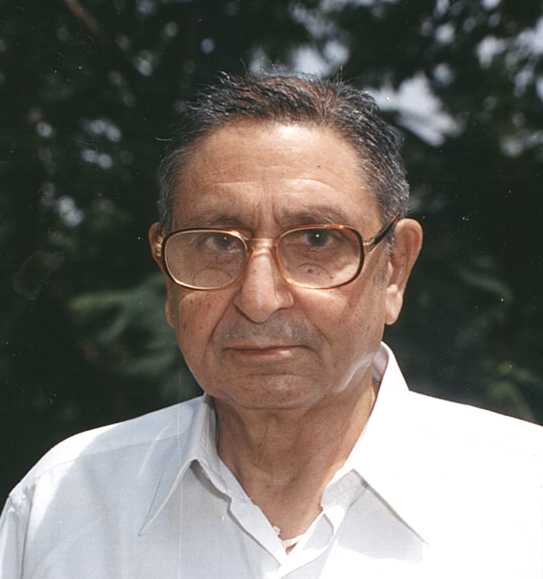|

|

|
|
Kashmiri Pandits' Association, Mumbai, India |

|
| | Home | June-July 2003 Issue | |
|
From the Pages of History
… J.N. Kachroo Kashmiri under Mughals
Mughals entered and occupied Kashmir in October 1586. As a province of the great Moghul empire, Kashmir started being administered by Subedhars (governors) appointed by the imperial government. Naturally the administrative pattern of Kashmir was brought in line with that prevailing in the rest of the empire. The main features of the Mughal rule in India, according to Sir Jadunath Sarkar were: 1. The uniform administrative type through out the subhas; 2. One official language; 3. One uniform system of coinage; 4. An all India cadre of higher services, the officers being transferred every three or four years; 5. Frequent march of armies from province to province and; 6. Deputation of inspecting officers from the Centre. Thus Kashmir broke age old isolation and joined a bigger world for the first time. Kashmir under Akbar (1586 -1605) Akbar believed that Kashmir was essential to the geopolitics of Agra. It seems he aimed at retaining the control of the territory (now a Moghul province) and at the same time earning the affection and support of the people. Akbar sent his army under a governor, Mirza Qasim. The emperor's guidelines to the governor were significant. He laid down : " to practise enlightenment, justice, non-sufferance of wickedness ......" However the first priority of armies was order. So Mirza Qasim, the first Subhedar deliberately used ruthless measures to smash all the opposition to the Mughal occupation. This continued till the summer of 1587, when he was replaced by Mirza Yusuf khan Rizvi. He ushered in a benevolent era of administration. It took him just about two years to suppress all opposition and create a peaceful atmosphere. Akbar's Visit : Akbar visited Kashmir first time in October 1589. He repeated his visits in 1592 and 1598 A.D. He stayed in the valley not for pleasure only. He took personal cognizance of people's wishes and demands. He took interest in the administrative affairs and took measures of far reaching consequences. In total, his policies and decisions, actions and precedents were aimed at establishing peace prosperity based on justice and equality. His major decisions can be summarised as under : I. Healing touch : During the Chak rule Sunnis were persecuted and Brahmins denied religious freedom. The era of religious discrimination and persecution practised by the Sultans was reinforced with the imposition of new taxes. Sukha, the historian says: "In every Brahmin house who maintained his caste, used to pay a tribute. For every religious practice, a Brahmin had to pay tax or fine." On his arrival in the province, Akbar announced that he would redress all the grievances of the people. No wonder he was warmly greeted on his arrival. Immediately he ordered : 1. Abolition of all discriminatory taxes including the hated Jazia. 2. He abolished all distinction based on religious sentiments and treated Sunnis and Shias equally. 3. He ordered that an officer helping a Brahmin or encouraging him to observe any religious function will be rewarded. 4. He ordered that the house of any officer found harassing a Hindu would be pulled down. 5. He visited Martand and distributed cows adorned with gold and pearls among Brahmins. 6. He joined the Diwali celebrations and got both banks of the Vitasta illuminated. 7. He prohibited the slaughter of cows. 8. On one of his visits he joined the festivities connected with the birth of Vitasta, as Zian-ul-Abideen would do on the 13th of the bright fortnight (moonlit) Bhadoon. Both banks of the river were illuminated with tiny lamps and the emperor went on the river in a decorated luxurious barge, specially made for the occasion. The hills round Srinagar and house tops were also illuminated. The emperor held a durbar to wind the festivities. The celebration also marked the end of a terrible famine that had preceded. II. Welfare and Relief Measures: 1. It was Akbar who for the first time suggested that some of the boats plying on the lake could be transformed as to be used for residential purposes. 2. He recognised the importance of shawl weaving. He ordered special facilities for the development of arts and crafts including shawl making and marketing. 3. During his very first visit he ordered the construction of a bastion wall round Hariparbat and a palace inside it. The purpose was to create work to help the people rendered poor due to misrule of Chaks. 4. He imported large quantity of food grains during famines. 5. He initiated public welfare works, especially to fight famine. They included (a) Building of roads, (b) Digging canals etc. 6. In 1592, he held a durbar, distributed in alms the gold and silver with which he had weighed himself. 7. Instead of distribution of free food only to fight famine, Akbar increased the purchasing capacity of the people. Besides other smaller works, he ordered the construction of a massive wall round Hariparbat and the city Nagar-Nagar. It took 8 years to complete it. Besides 200 skilled workers brought from India, a very large number of local labour earned their wages, which were higher than the prevailing rates. Total cost of the project is said to be 11,000,000 Akbarshahi. There was no begar, free labour. 8. Akbar was very sensitive to the complaints or grievances of the people. Soldiers living in the city in the vicinity of the civilians were a source of harassment to the common people. He ordered the construction of a township on the slopes of the Hariparbat, named it Nagar-Nagar and shifted the soldiers there, making the civilian areas out of bounds to them. Even harassment of any civilian by the soldier was made a cognizable offence. Akbar inaugurated the whole complex on his visit in 1598. III. Administrative Reform : Akbar did not neglect sound administration. He got revenue settlement carried out on the lines of Todarmal. Todarmal made Persian as court language. Kashmiri Pandits had gained mastery over Persian language for a century before Todarmal's decision. As per necessity for the smooth administration, there was massive recruitment of Pandits to the Imperial Administrative Service. Some of them rose very high. Generally speaking the administrative pattern continued even after Akbar, who died in 1605. |
|
|
JOIN US |
|
|


 It
is said, " Great kings can do great things, but they cannot guarantee
great successors." Unfortunately for Kashmir, Budshah's successors
proved the truth of the saying. After the death of Zain-ul-Abideen,
Kashmir came under the rule of incompetent, indifferent and in certain
cases licentious Sultans. Chaks who succeeded the Sultans were no better.
They instead of undoing the ills that had crept in worsened the situation.
The period of more than a century (1470-1586 AD) destroyed peace,
tranquility and amity to give place to misrule, intrigues, internecine
quarrels and revolts. It gradually saw the revival of the Sultan
Sikandar's disastrous policy of religious bigotry. The Chaks fuelled Shia-Sunni
conflict and hatred. It took violent turns at times. It was for Akbar and
his successors to put the newly acquired territory on the path of peace
and prosperity.
It
is said, " Great kings can do great things, but they cannot guarantee
great successors." Unfortunately for Kashmir, Budshah's successors
proved the truth of the saying. After the death of Zain-ul-Abideen,
Kashmir came under the rule of incompetent, indifferent and in certain
cases licentious Sultans. Chaks who succeeded the Sultans were no better.
They instead of undoing the ills that had crept in worsened the situation.
The period of more than a century (1470-1586 AD) destroyed peace,
tranquility and amity to give place to misrule, intrigues, internecine
quarrels and revolts. It gradually saw the revival of the Sultan
Sikandar's disastrous policy of religious bigotry. The Chaks fuelled Shia-Sunni
conflict and hatred. It took violent turns at times. It was for Akbar and
his successors to put the newly acquired territory on the path of peace
and prosperity.

